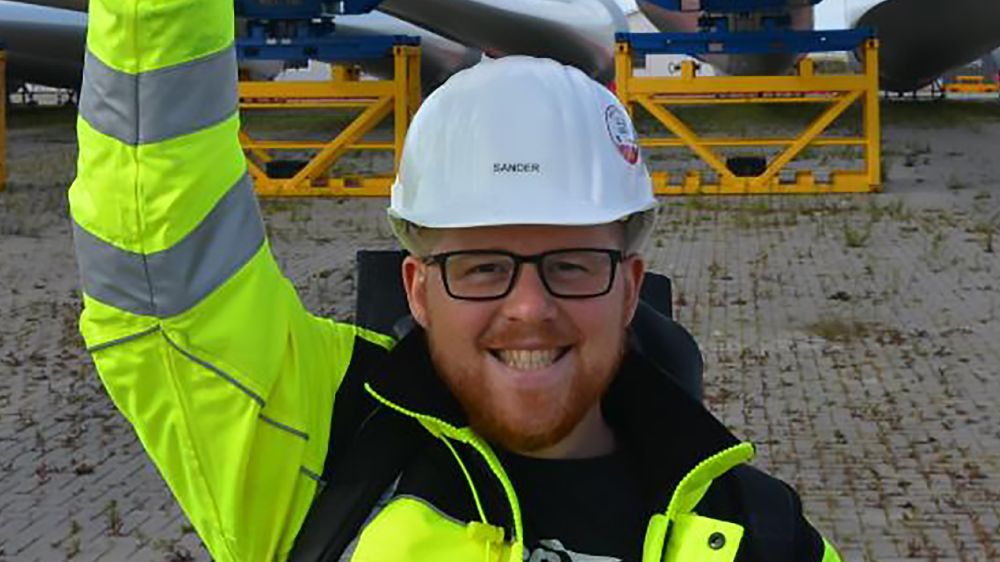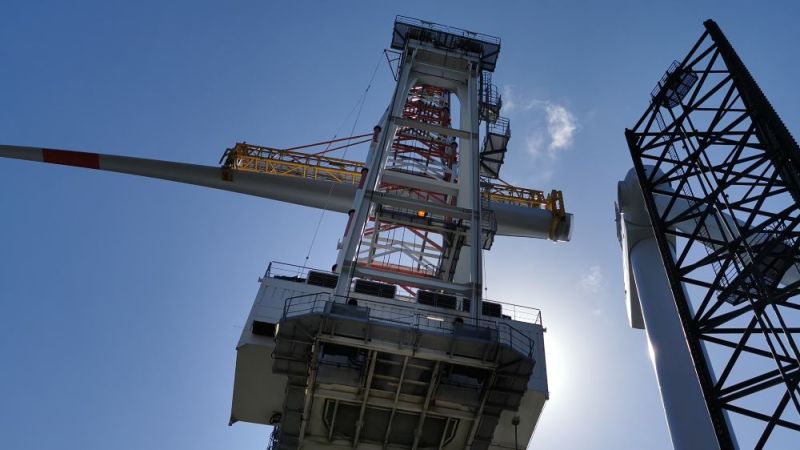Aljoscha Sander Wind power
"That was the jackpot for us"
Mr Sander, how did you come up with the idea for your start-up?
It’s a bit of a convoluted story: It started during my work on the SKILLS research project at the University of Bremen. The project aimed to optimise the installation methodology used to install offshore wind farms. We actually wanted to investigate the logistics with which the individual components are delivered and transported. For this purpose, we were looking for a measurement system with which we could record the vibrations of the individual components. This should be able to be operated from the coast. The system should therefore be easy to operate, function self-sufficiently and have as long a battery life as possible.
Then you didn’t find a suitable measurement system?
Most of the systems you can buy like this are either very simple and also not particularly expensive - but then not robust enough, not waterproof or don’t have the necessary battery life. Or there are systems that rely on external infrastructure, such as mobile radio or WiFi.
That wouldn’t work offshore.
Right. So we built a system ourselves, according to the principle: Tupperware box plus powerbank plus old mobile phone. We ended up buying basic, inexpensive sensors and using lead-acid batteries - an extremely simple system. You have to imagine: It didn’t even have a switch, just a plug. And that’s what we used for our measurements. At first, actually, all of them in the port. We investigated the towers that are loaded onto the ship.
"At first" in the port? So later you were also able to use your system offshore?
We were lucky, so to speak. The measurement system was attached to the towers and thus departed with them. Then there were difficulties with the blade installation. Imagine this: It really is impressive. You’re building a structure that is over a hundred metres tall. You are on the open sea and of course you have wind. The rotor blades are very large, very light, with an aerodynamic structure. Then you have a hundred bolts at the base of the blade that you have to insert into a suitable structure. This is the bottleneck during the installation, so to speak. The good fortune was now that our measuring boxes were on board. One of the engineers came up with the idea of using them. That was the jackpot for us. It allowed us to record very unique data.
What did you use this measured data for?
First of all, the measurement campaign that we then carried out at all the turbines provided us with valuable data for the research scene. These data are also freely accessible, as open source. This is how we found out that it was not the blades that were moving so much - but the turbine! At least that was the case with these Senvion turbines. The state of the literature so far has been that the blades move. This shows that these processes and the knowledge about them are still in their infancy. The industry is still very young.
How can such measurements - and thus your system - assist with further installation?
We were able to tell very precisely from the data up to what wind speed or wave height the engineers could successfully proceed with the installation. We were able to make relatively rudimentary, but still workable, predictions about what conditions would work - not conditions that were kind of estimated beforehand, but based on the previous installations. The data were then also used to develop a design for a vibration damper so that the plants vibrate less.
But every customer has to collect these data for themselves?
Every installation is different. You always have different tools, you always have different locations, you always have different ships. You have different crews. The human factor is also a big unknown. Simply put, offshore wind farms are not built like cars or food processors. The process is not so standardised that you might be able to develop a measurement system that always delivers comparable data without having to be adapted to the project-specific circumstances.
And that's how your business idea came about.
We have indeed found a niche. There is no one on the market who offers a solution in any form. And such an offshore installation can easily cost 300,000 euros a day. If the work is delayed, the costs will still be the same. In the future, the plants will become even larger, the locations even more difficult, with fewer suitable weather windows. That's why we see a tremendous potential for cost savings here.
The interview was conducted by Meike Bierther, science journalist at Project Management Jülich.
Aljoscha Sander is a flow mechanics specialist. He studied bionics at Bremen University of Applied Sciences at Bachelor and Master level - thematically interdisciplinary with topics from biology and engineering. He acquired his expertise in electronics in his spare time. He dedicated his dissertation to the topic of the structural dynamics of wind turbines during installation. He and his colleague Andreas Haselsteiner founded the start-up flucto in November 20.



